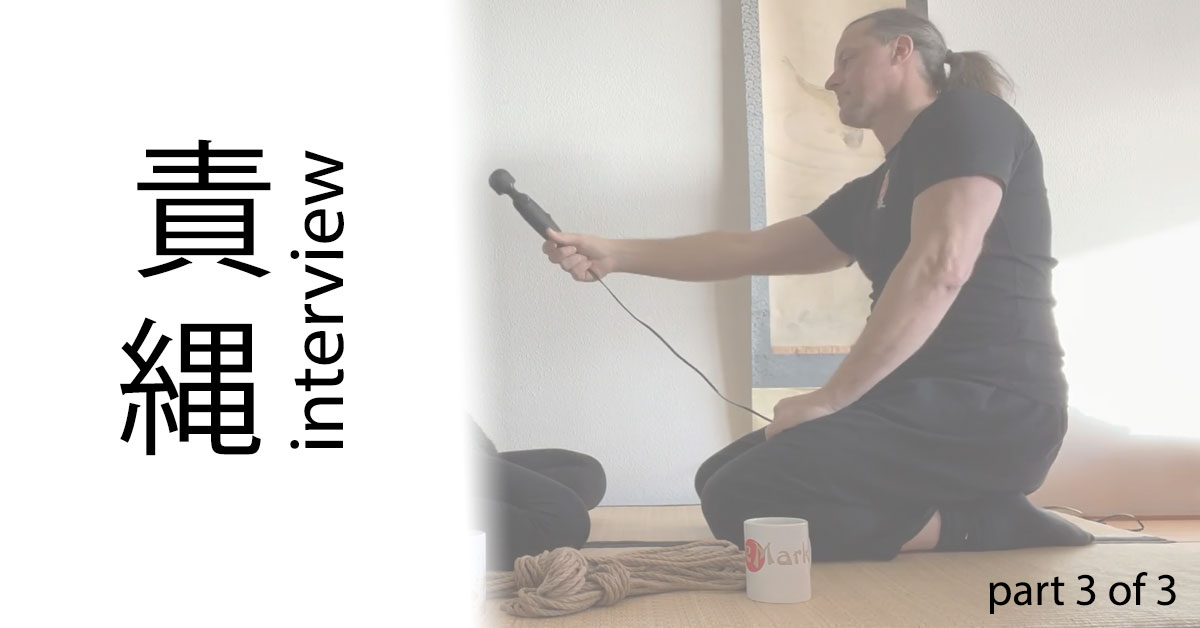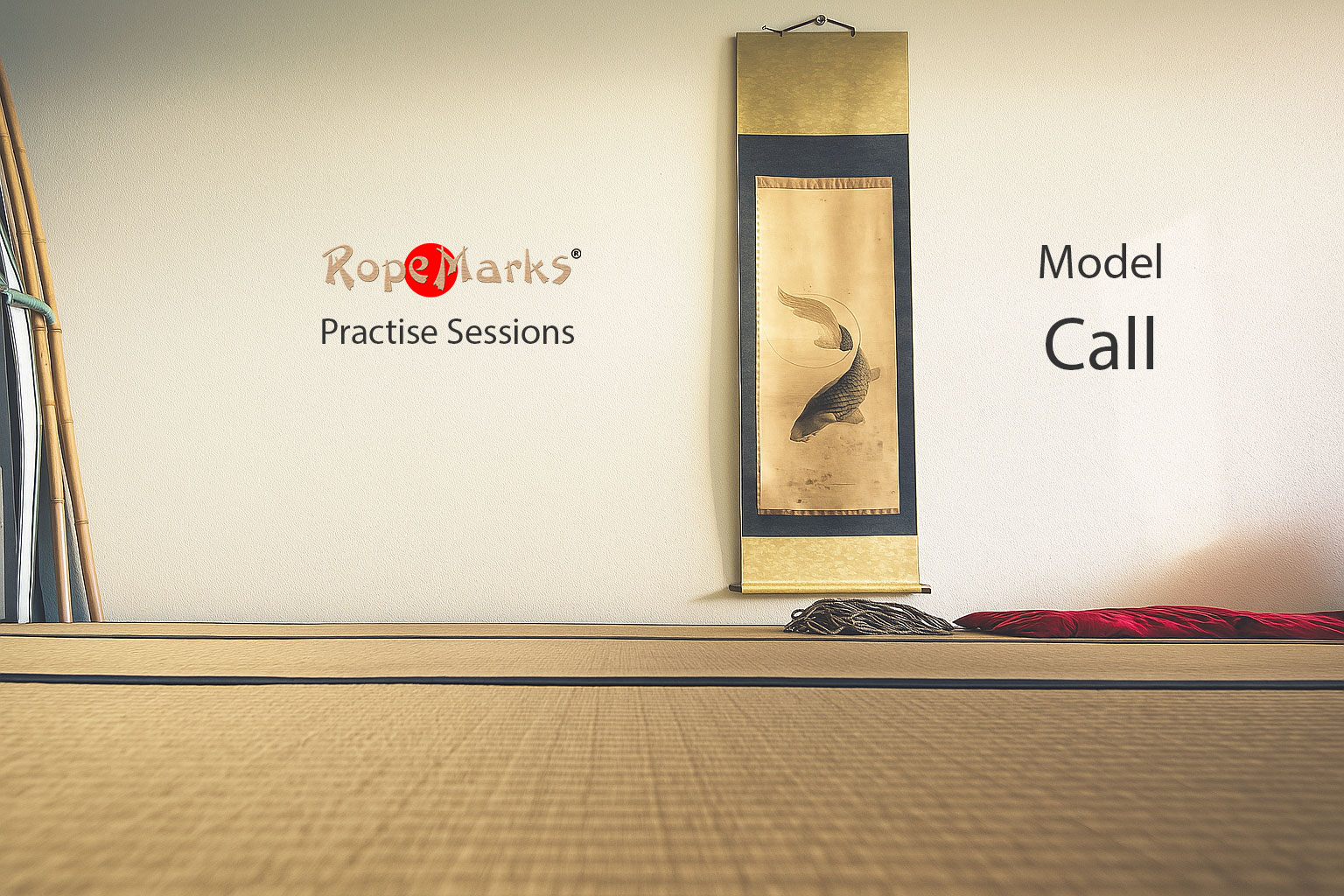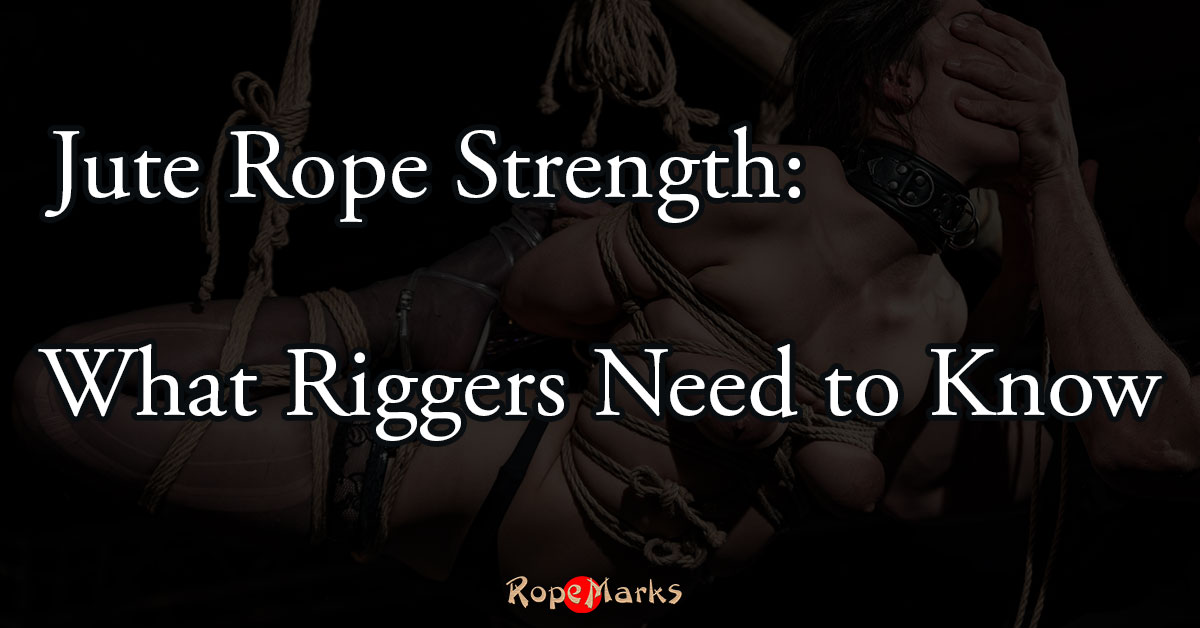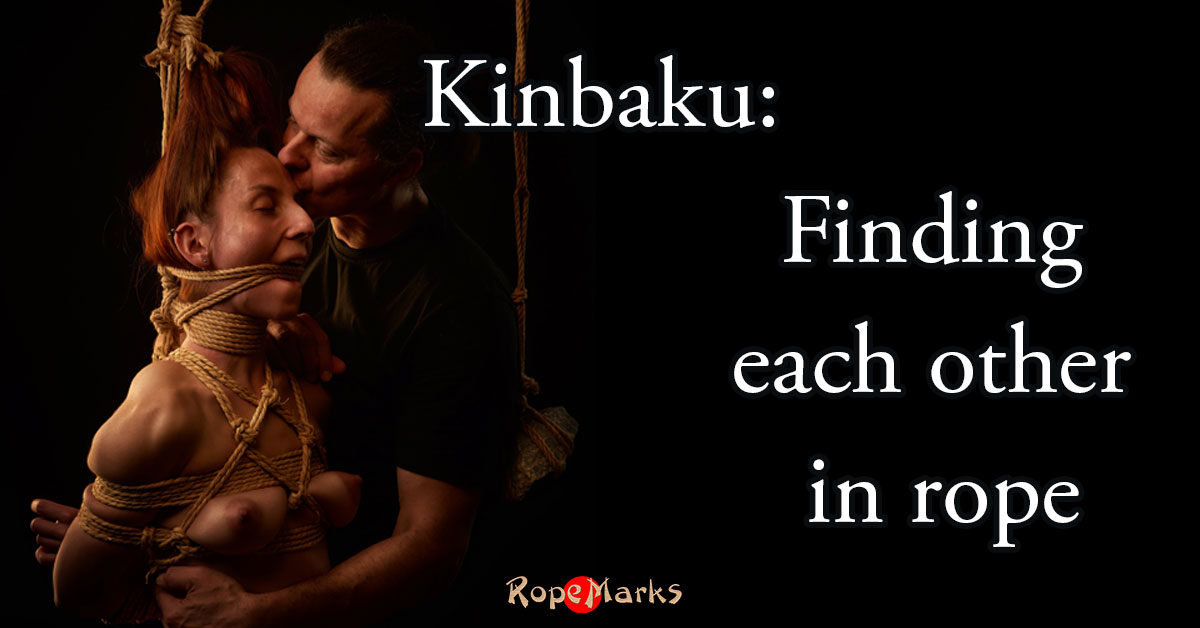Tying or being tied semenawa-style is quite popular in today’s Japanese inspired rope scene. Semenawa is often understood as ‘torturous rope’, but is a context-dependent and nuanced term that can be understood in a variety of ways. Some popular understandings of semenawa that I found after a brief scrolling session on the kinbaku-minded-internet were: “[…] giving more than enough” (Wildties) (4), “[…] going out of your personal comfort zone, coming close to your limits, dancing on the edge” (Natasha Nawataneko) (4), “[…] that need for surrender regardless of who ties and who is tied” (Wildties) (4), “[…] no choice but to endure” (Yukimura) (1), “[…] to break down inhibitions and expose what lay deep behind the ‘walls of protection’ that we tend to build around us” (ReikaKinbaku) (3) and “[…] particularly suited to those qualities you potentially find more easily in a mature heart” (RedSabbath) (2).
What I could not find during my brief internet scroll was a perspective on semenawa by RopeMarks. Luckily, I don’t have to Google when it comes to getting answers from RopeMarks. I can simply ask him. So that’s what I did. My never ending questions – and his endless answers – resulted in a two-hour conversation on semenawa, what it is and what it is not, on the impact of commercialization and on the importance of seeing semenawa as relational. You can read the most interesting bits of our conversation below, re-written and edited by yours truly. In the first part, we talk about what semenawa is not and about the impact of commercialization. In the second part, we talk about different misunderstandings of semenawa and about whether semenawa can be equated to ‘hardcore’ rope. In the third and last part, we switch roles: RopeMarks also asks the Shady Lady questions about her views on semenawa.
Part 3/3
the Shady Lady: Semenawa is at times described as something that fits in a framework of consensual non-consent (CNC). What do you think of this?
RopeMarks: I don’t really agree with that. If you formulate it like that, CNC is CNC, and it is not semenawa. Those are two different things that don’t necessarily have something to do with each other. Maybe for some people, semenawa can fit in a CNC context, but you are comparing apples and pears. I see this more as another Western ego thing, where semenawa needs to be categorized within Western terms so we can make sense of it.
Comfort zone and boundaries are totally dependent on the model and what you have communicated about the rules of the game you play with each other. I never push for semenawa and I don’t look for it without consent. I don’t think it is correct to do that. I think semenawa is something you can only do with somebody you know very well, because you are working at the borders of boundaries. There are people who immediately, with almost anyone, seem to let go in rope: is that semenawa? Or is that just letting go and enjoying the experience?
the Shady Lady: Do you think semenawa can also be understood as certain headspace for the rigger? Most focus seems to be on the experience of the model.
RopeMarks: Well, I think the experience of semenawa is mostly one for the model. As a rigger, you always have a responsibility for the safety of the model, so you cannot lose yourself in the experience in the same way. Yet, when a rope session gets more intense, I do get into a state of hyperfocus: my focus is only on you [the Shady Lady] and on reading your body language and energy. It happens when I see that you are enjoying yourself in rope, when I am reading your face, your hands and toes, when I know that there are no nerve issues and we enter a state of flow. But mostly, it is an experience for the model.
RopeMarks: Which leads me to the question: how would you describe your experience of semenawa?
the Shady Lady: To be honest, I think I have only experienced it once or twice, but I also see that I am setting the bar for a ‘semenawa’ experience quite high. For me it’s not just an experience of surrender, intense pain, masochism, humiliation or submission. I’ve pondered over how to describe my personal experience of semenawa best, and came up with the (simple) metaphor of a bucket filled with water. Semenawa is the headspace that comes after that bucket filled with water – the bucket being me – has been gently tipped over, which results in a total release of energy and tension. The bucket is empty, and I feel empty, in a very positive way. No thoughts in my mind, nowhere to go or to be. Before that tipping point, the bucket had been swinging and swaying, because of different positions, transitions, rope that’s been removed or applied, etc. The swinging and swaying is the play between me and you [RopeMarks]: more sensations, less sensations, altering sensations. To me, the headspace of semenawa happens after the bucket has been tipped over.
And I do not think it is you as the rigger who ‘controls’ what happens to the bucket. You can give me some pushes and pulls, but whether the bucket actually tips over is something that cannot really be controlled. There are conditions that we can create to make the tipping more likely: for instance, both of us being in a good mood, being in tune with each other, etc. Wanting to experience semenawa might be similar to people very much wanting to have an orgasm: the more you are working hard at trying to make it happen, the more you are failing at getting it.
RopeMarks: To me, your understanding of semenawa sounds very similar to the experience of subspace. Would you also describe it in similar ways?
the Shady Lady: That’s a good one! I have never really thought of that comparison to be honest. I think there are some similarities, but they are not completely the same to me. The experiences that I have had of subspace were different. When we stick with the bucket metaphor, subspace feels more like the bucket shakes uncontrollably and was violently kicked down a few flights of stairs. Subspace feels more trippy and spacey: the perception of the room starts to change and thought patterns run differently. Where subspace was mostly triggered by painful stimuli, semenawa is triggered by the more constant pressure of rope. It feels more calming. But still, semenawa and subspace are both different states of being beyond the ‘everyday’ perception of the world. And I could easily imagine that to some people, the experience of semenawa and subspace are very similar.
RopeMarks: Have your ideas on semenawa changed since the time you started rope, compared to now?
the Shady Lady: Yes, they have changed quite a lot actually. At the beginning of my time in rope, I thought semenawa was equivalent to hardcore rope and hardcore expressions on the side of the model; there had to be intense pain, and there had to be crying, screaming or drooling. I felt quite intimidated by that image, and at times thought that I was experiencing the kind of Japanese inspired rope that you do ‘wrongly’ because my expressions did not really match. The term semenawa was actually causing me quite some pressure and unhelpful stress in rope modeling.
And still, I often don’t experience suffering in rope, not physical and not mental. Maybe semenawa is so often associated with suffering because people mix up their fantasies of suffering and torture with reality. I might be taking this too literally, but there can obviously never be real torture in rope. If it would be real, the rigger would not be a sadist but a criminal, and the model would not be a masochist but an actual victim whose human rights are being violated. For me semenawa is not so much related to a fantasy of intense suffering or torture, but I cannot deny that the realms of fantasy and desire obviously do play a big part in one’s experience in rope.
One understanding of semenawa that I recently heard and liked a lot was at Naka’s and Iroha’s workshop that we attended. He said that semenawa could be understood as endurance and not as suffering. That understanding comes a lot closer to my personal experience. I can and want to endure in rope. I love the fight and challenge with myself of not giving up easily when sensations are intense. That makes me feel powerful, beautiful, pure and vulnerable at the same time. When there is a bad kind of pain, it definitely takes me out this headspace, and that distinction is very important to my experience. At times, when the bucked is pushed and pulled in the right ways for a long period of time, it can tip over and lead to a semenawa headspace.
the Shady Lady: To wrap up the interview, I would like to ask you the last question. Kinbaku and semenawa are edge play and are inherently unsafe. In what ways do you think they can be done in the safest way possible?
RopeMarks: To be honest, you cannot safely suspend somebody you do not know well. Suspension is just too dangerous for that. You don’t know how the model will communicate, models don’t always know what potential problems are and how to speak up, etc. After a while, mostly depending on how often you see each other, also as a person in a non-kink context, you can get to know what buttons could be pushed, and what buttons cannot. Only then, you can see if you can take the playing field towards boundaries. And I think if you play at or slightly beyond the boundaries, that is semenawa. It can be physical endurance, psychological boundaries, sexual boundaries, etc. As a rigger, to do this safely, you need to take the fantasy of the model into account, and separate it from what realistically can be done. The question that comes to my mind now is: am I then doing semenawa, or am I just doing BDSM? Is semenawa not just an intense part of BDSM or the other way around?
Too many people take nerve damage and circulation issues as a normal part of rope. It is a real risk, but it should never be normalized. We also saw this during the armbinder workshop we have recently taught: many participants thought it was normal for arms to sleep and go numb in armbinders, but I don’t agree with that. You are taking unnecessary risks by seeing that as normal, and it is not part of semenawa or kinbaku.
After all this talk, I am not yet expressing what I am feeling about semenawa, perhaps partially due to me not being Japanese. Commercialization makes concepts like semenawa too loaded. If you are Japanese, and you are doing BDSM together, you are having an experience, both partners feel good, and the model can surrender, the energy is right, and you feel a sigh of release and acceptance, all pains you feel seems to disappear: is that semenawa? Does it even need a term?
It’s not something that you can learn or strive for. It happens to you, and it is an experience. It might be similar to reaching nirvana: it is like practicing a lot (of meditation) and all of the sudden, an experience or insight comes to you. In a way, semenawa is similar. The model has to surrender, otherwise rope can be a horrible and painful experience. But the model cannot actively choose to surrender, and a rigger cannot force somebody to experience semenawa. You can talk about it, put it in language, but really learning it cannot be done. You have to walk the path yourself, and nobody can give you a route map.
Part 1 | Part 2 | Part 3 | Semenawa on RopeMarks | the Shady Lady | RopeMarks
Translations
Update #1: I’ve noticed that after this interview there has been some discussion on the topic of semenawa. I don’t know if these where triggered by this interview or it was accidentally timed just right. In either case, it doesn’t matter much, but people I hold knowledgeable on the topic of Japan, Japanese language and Japanese bondage have come with articles on the topic. I want to add these to this interview to provide a broader view on “semenawa”.
- Nuit de Tokyo, “Random boring and worthless thoughts on “seme”, the word.”
- (1) https://www.kinbakutoday.com/aibunawa-and-semenawa-pleasure-and-endurance/
- (2) https://www.kinbakutoday.com/the-value-of-a-mature-heart-in-semenawa/
- (3) https://www.reika-kinbaku.net/post/seme-in-japan-and-kinbaku
- (4) https://discoverkinbaku.com/en/the-power-of-surrender-some-thoughts-on-semenawa-from-a-bottom-perspective/













Leave A Comment